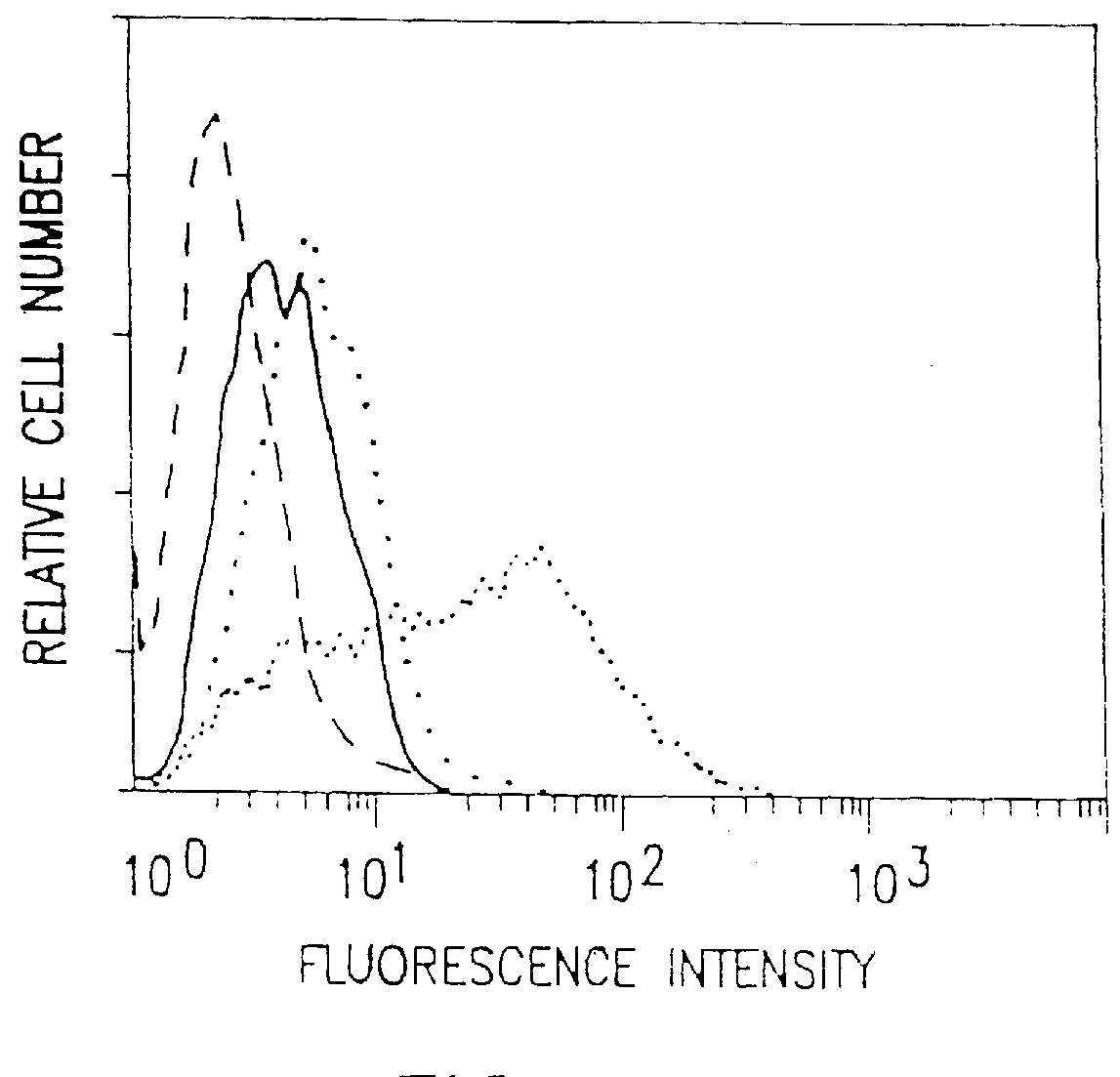Compositions for targeting the vasculature of solid tumors
a technology for vasculature and composition, applied in the direction of peptide/protein ingredients, fusions for specific cell targeting, antibody medical ingredients, etc., can solve the problem that many of the most prevalent forms of human cancer resist effective chemotherapeutic intervention, and the concept of "total cell kill" is much more difficult for most chemotherapeutic agents to reach all
- Summary
- Abstract
- Description
- Claims
- Application Information
AI Technical Summary
Benefits of technology
Problems solved by technology
Method used
Image
Examples
example ii
Solid Tumor Therapy Using A Vascular Targeted Immunotoxin
This example describes the successful therapy of the solid tumor model described in Example I, using the anti-tumor endothelial cell immunotoxin, MS / 114dgA, and the anti-tumor cell immunotoxin, 11-4.1dgA, alone as well as in combination therapy.
A. Materials and Methods
1. Animals
BALB / c nu / nu mice were purchased from Simonsen (Gilroy, Calif.). SCID mice were from the National Cancer Institute (Bethesda, Md.). Germ-free SCID mice were from the University of Wisconsin (Madison, Wis.). All animals were maintained in microisolation units on sterilized food and water.
2. Cells and Culture Conditions
All cell lines used in this study were cultured in modified Eagle's medium (MEM) supplemented with 10% (v / v) fetal calf serum, 2.4 mM L-glutamine, 200 units / ml penicillin and 100 .mu.g / ml streptomycin. Cultures were maintained at 37.degree. C. in a humidified atmosphere of 90% air / 10% CO.sub.2. The C1300 neuroblastoma line was established f...
example iii
Targeting the Vasculature of Breast Tumors
This example describes an approach for targeting the vasculature of breast cancer and other solid tumors in humans. This approach is exemplified through the use of bispecific antibodies to selectively induce the activation antigens, Class II and ELAM-1, on the vascular endothelial cells of syngeneic breast tumors in mice and then targeting these antigens with immunotoxins.
Murine models may first be employed. The results from such studies will be understood to parallel the situation in humans, as mouse models are well accepted and routinely employed for such purposes. Following successful vascular targeting in the mouse, success in man is likely as highly specific anti-breast cancer antibodies are available (Denekamp, 1984; Girling et al., 1989; Griffin et al., 1989; Lan et al., 1987; Boyer et al., 1989).
In the case of clinical (as opposed to diagnostic applications), the central issue is to confine the expression of the induced target antige...
example iv
Identification and Characterization of the Tumor Endothelial Cell Marker, Endoclin, and Antibodies thereto
This example describes the generation of two new monoclonal antibodies, TEC-4 and TEC-11, directed against a tumor vasculature antigen. TEC-4 and TEC-11 are shown to recognize endoglin, which is shown to be associated with growth and proliferation of human tumor endothelial cells in vitro and in vivo. Endoglin is selectively upregulated on vascular endothelial cells in a broad range of malignant tumors and is envisioned to provide a suitable marker for use in the diagnosis and therapy of miscellaneous solid tumors.
A. Materials and Methods
1. Cells and Culture Conditions
Cell lines were obtained from the Imperial Cancer Research Fund, London (U.K.) Tissue Bank unless otherwise indicated. SP2 / 0 murine myeloma cells, SAOS osteosarcoma cells and the ECV-304 human endothelial cell line were obtained from the American Type Culture Collection, Rockville, Md. A375M and T8 human melanoma l...
PUM
| Property | Measurement | Unit |
|---|---|---|
| diameter | aaaaa | aaaaa |
| concentration | aaaaa | aaaaa |
| pH | aaaaa | aaaaa |
Abstract
Description
Claims
Application Information
 Login to View More
Login to View More - R&D
- Intellectual Property
- Life Sciences
- Materials
- Tech Scout
- Unparalleled Data Quality
- Higher Quality Content
- 60% Fewer Hallucinations
Browse by: Latest US Patents, China's latest patents, Technical Efficacy Thesaurus, Application Domain, Technology Topic, Popular Technical Reports.
© 2025 PatSnap. All rights reserved.Legal|Privacy policy|Modern Slavery Act Transparency Statement|Sitemap|About US| Contact US: help@patsnap.com



